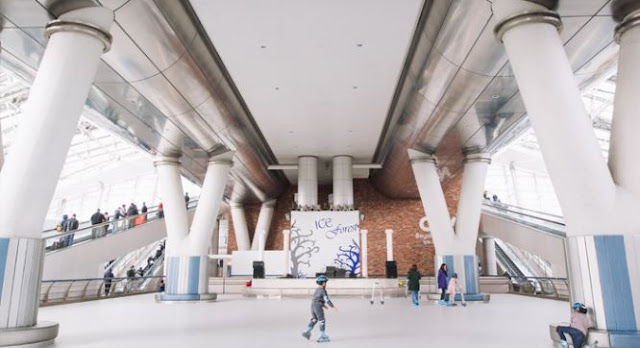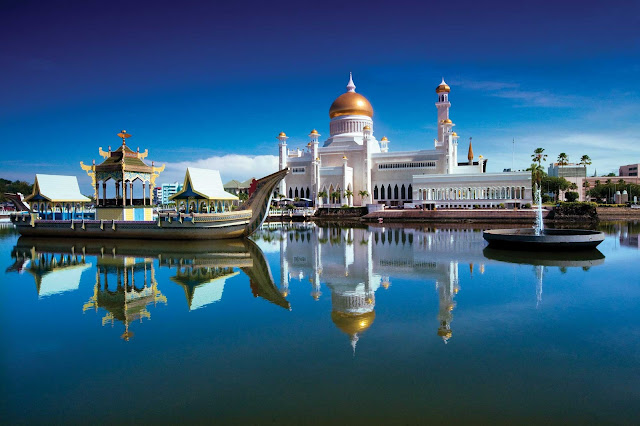10 Best Things to Do in Chiang Mai - No.1
10 Best Things to Do in Chiang Mai - No.1
Chiang Mai is both a natural and cultural
destination. The city center retains a ‘small-town’ intimate feel and houses
numerous historical temples and attractions within walking distances of each
other. Just under half an hour’s drive, Chiang Mai’s verdant countryside and
mountains offer limitless possibilities for nature explorations as well as
visits to many fascinating ethnic hill-tribe villages. In fact, there are so
many places to see in and surrounding the city that you’ll have to plan well to
fit them all in, and this is where these Top 10 Chiang Mai Attractions come in
very handy.
1. Doi Suthep
Doi Suthep is a constant part
of life in Chiang Mai. A Thai saying goes, "If you haven't tasted Khao Soi
or seen the view from Doi Suthep, you haven't been to Chiang Mai." This
regal mountain overlooks the city from the northwest, providing commanding
views from its summit. Aside from its dominating presence on the horizon, Doi
Suthep is the home of some of the most deeply loved symbols in the Kingdom.
In 1981 Doi Suthep, Doi Pui
and Doi Buakha, along with the 161 square kilometres (62 square miles) of
forest in which they are located, became Thailand's 24th national park. A year
later a 100 square kilometre (38 square mile) annex was added, bringing the
park's total area up to 261 square kilometres (100 square miles). Dense forests
hang from the mountain's shoulders like a cloak; deciduous at lower elevations
and evergreen near the peaks of the mountains.
The highest peak in the park
is Doi Pui which tops off at 1,685 meters (5,528 feet), making it the eighth
largest mountain in Thailand. Flowing from these heights are some of the most
highly enjoyable and accessible waterfalls in the Kingdom's northern reaches.
Mae Sa Falls, Huay Kaew Falls and Monthathan Falls are among the most popular
sights of the park and are easily reached from the main road. The forest is
also home to a variety of wildlife, including many small mammals and birds as
well as the rare Crocodile Salamander, which is only found in four places in
Thailand.
The park's high elevation
keeps the temperature pleasantly cool, even during the blistering heat of June.
Doi Suthep National Park also incorporates the Mae Sa Valley, a veritable
buffet of activities and sights. Farther north, in the park's 100 square
kilometre (38 square mile) annex you will find the delightful and often
overlooked Mok Fa area which boasts a wonderful waterfall, a cave and a nature
trail.
Despite all of this stunning
natural beauty, the main reason many visitors come to Doi Suthep National Park
is to visit Wat Phra That Doi Suthep, a venerable and venerated temple that is
one of the most holy Buddhist sites in Thailand. Wat Phra That Doi Suthep is a
major pilgrimage destination, especially during the Buddhist holidays of Makha
Bucha and Visakha Bucha (February 13 and May 11, respectively).
This awe-inspiring temple is
crowned by an elaborate Chedi (Monument), 24 meters (79 feet) tall and gold
plated from top to bottom. On a clear day the Chedi's golden exterior catches
the sun and blazes like a beacon over the city. The temple dates back to the
14th century and the tale of its founding is a quintessential Thai myth, full
of magic and mystery. Those moved by the serenity and spirituality of the
temple may wish to take a meditation course at the International Buddhism
Center located on the temple grounds.
Adding to the importance and
prestige of Doi Suthep is the palatial Bhubing Palace, a vacation home of the
Royal Family. When not serving as the Royal Residence, the Bhubing Palace
serves as a guest house for foreign dignitaries. Built in 1961, the Palace's
first guests were the King and Queen of Denmark. Visitors to the park can also
pay a visit to the small hilltribe villages on the park grounds, which offer a
glimpse into a way of life that has changed very little in hundreds of years.
Shops and Restaurants in Doi Suthep
There are a large number of
shops and small restaurants scattered around throughout the park, especially
near Wat Phra That Doi Suthep, and there are a few options for those who wish
to stay overnight. Most of the accommodation consists of small huts and
rudimentary bungalows, however, and most of the park's highlights can be easily
seen in a day.
Doi Suthep Topography and Climate
While not as lofty and rugged
as Doi Inthanon, Doi Suthep still offers plenty of natural beauty. The road to
the top meanders through verdant forests, runs along clear streams and flirts
with mighty waterfalls, passing by a number of attractions along the way. The
landscape of Doi Suthep is marked by rolling hills covered in thick tropical
forest, which gives way to evergreens as you climb higher and higher.
The highest peak in the park
is Doi Pui, which reaches a height of 1,685 meters (5,528 feet), while Doi
Suthep itself reaches an altitude of 1,676 meters (5,498 feet) and Wat Phra
That Doi Suthep stands on the flank of the mountain at an elevation of 1,056
meters (3464 feet).
Waterfalls and Park
Doi Suthep National Park
boasts a number of highly enjoyable and easily accessible waterfalls-cascades
of foaming water plunging from a series of cliffs and forming glistening pools
along the way. The most popular of these waterfalls is Huay Kaew falls, which
can be found just off the road near the entrance of the park. This lovely
waterfall is an excellent place for a picnic before or after climbing the
mountain to see the sights above.
A little farther up the road,
towards the temple, lies the Monthathan waterfall, which flows down over nine
tiers and is another popular picnic spot, well worth the 300 baht admission.
With a good deal of the park 1,000 meters or more above sea level, Doi Suthep
National Park enjoys a climate that is distinctly cooler than the basin of
Chiang Mai. During the hot season (April to June) average temperatures run
around 20˚C to 23˚C (68˚F to 73˚F), while during the cool season (mid-December
to late March) the mercury can drop as low as 6˚C (49˚F). Rainfall is pretty
much a given during the rainy season (July to mid-November) and the view from
the top is usually obscured. During the hot months (March to June) the shade of
the trees and the coolness of the waterfalls are blissful oases from the
sweltering city heat.
Doi
Suthep Flora and Fauna
Doi Suthep is a flourishing
forest ecosystem, consisting of mixed deciduous forests (trees that lose their
leaves in the dry season) at lower elevations and tropical evergreen forests
above 1000 meters. Mixed in among the trees are countless flowers that scent
the air and delight the eye with their brilliant colors.
Inhabiting this bountiful
biosphere are a number of animal species, mostly birds and small mammals.
Macaques are the most common primates but other species of small monkey can be
glimpsed cavorting among the treetops. Wild boar tramp game trails in the
park's deep interior and dozens of varieties of bats fill the skies at dawn and
dusk. The park is also one of four places in Thailand that are called home by
the rare Crocodile Salamander.
Like the nearby Doi Inthanon
National Park, Doi Suthep is a wonderful place for bird watching and the park
is home to over three hundred species. Dawn is the best time to lie in wait
with your binoculars and camera and play Audubon Society.
http://www.chiangmai.bangkok.com
Make travel plans and Meet travel mates here!
Play with planetwith!












Comments
Post a Comment